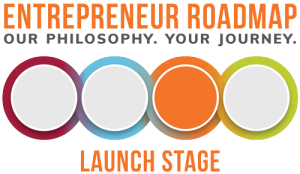From Try To Buy: Converting A Pilot To A Paying Customer

 The goal of a pilot is to build up enough proof in your prospect’s mind that they can decide to purchase your product (or not). Contrary to what you might think—a valid and valuable outcome for an entrepreneur is to have the prospect choose not to buy what you are offering or you to choose that the prospect should not buy it. Like everything else around entrepreneurship and pilot management—converting a pilot is a process.
The goal of a pilot is to build up enough proof in your prospect’s mind that they can decide to purchase your product (or not). Contrary to what you might think—a valid and valuable outcome for an entrepreneur is to have the prospect choose not to buy what you are offering or you to choose that the prospect should not buy it. Like everything else around entrepreneurship and pilot management—converting a pilot is a process.
The entire effort of converting a pilot should start early in the sales cycle. The information you uncover during the needs analysis, from each of the people involved in the sale of your product, is the basis for how you will have set the pilot success criteria. The basis for conversion is the demonstration of value, utility, usability, etc—so the overall value proposition that you offer in relation to all explicit and opportunity costs. Let’s assume that you have done a good job at needs analysis and managing the sales process. You have a good set of criteria that you know you can fulfill. You get a commitment from the prospect to pilot your product and it is actively underway. You have had successful status meetings and are able to positively prove or disprove your success criteria at each one. Now comes a decision point on your part.
Is the pilot headed toward successfully proving your value proposition to that particular customer (yes, they are specific to each customer)? If not, it may be time to pull the plug on the pilot. The question is always “why would I do that?” and here is the answer… if you let a pilot continue to the end and not prove out why your product should be purchased, you have definitively proven why NOT. You have assured you will never have another chance to sell to that prospect and put a use case for other prospects in play that can and will be used against you. People will talk. You will lose opportunities without even knowing someone was in the market because they will not even talk to you or seek information about your product. It is over before it starts. Pulling the plug provides you the opportunity to demonstrate an outcome that is more “maybe, but not yet” instead of NO.
Enough gloom. Let us assume that you have demonstrated through the pilot that you can deliver what the prospect wants. You recap this in your status meetings and reports. You have a good idea of why each member of the prospect’s team will want to continue to use what you have provided. So here is the conversion tip—why wait? You are perfectly within reason to ask the prospect if they are interested in foregoing the balance of the pilot and roll right into implementation and full use. Why not? You showed it worked.
If they are not ready to jump at that point, no problem. There are other steps that you should have, or need, to accomplish that facilitate the conversion. You need to have all the required approvals in place. Reduce the friction of a conversion. Be easy to do business with.
You should have agreed upon:
- Final pricing
- Implementation plan
- Contract language
- Payment terms
You and your team need to be able to provide answers to the following:
- Have you demonstrated the features and benefits that the prospects require?
- Does the benefit you deliver outweigh the alternatives?
- Competition
- Inertia
- Not spending any money
- Etc
- Have you gotten agreement from the prospect that you have delivered on your promised value propositions? Can you prove it?
- Did the customer provide glowing reviews in addition to the above?
- Are pricing and implementation are good to go?
If you can honestly answer “yes” to the above—the conversion should be a foregone conclusion. It is academic. You have pre-closed them and just had to check all the boxes. Now ask for the final commitment.
If the situation at your prospect has not changed and you have demonstrated what you have agreed upon, your request for them to convert the pilot into full use should result in a “yes.” If not, you missed something. Find out what it was and either remedy it or realize that you left out a critical piece of the process and chalk it up to experience.
If there is hesitation by the prospect when it comes time to commit, you can always take the product away. The pilot is not intended to be lead for an indeterminate period. You and the prospect committed to a time frame, milestones, etc. Now it is over, and either they buy or give the product back. If they do not want to give the product back (stop using it) then close the sale. If they are OK with giving it back, you will not be getting a sale.
Your successful pilot should roll seamlessly into your implementation plan which should have been determined during your sales cycle. Entrepreneurs have asked “but what do I do if they want to roll it out across the country?” My answer is a staged implementation. You are the expert and know what you and your organization can sustain. You need to have a plan that has been designed to maximize success. If you do not know how to do that, get help from someone that does.
If you get the OK and they are ready to roll right into your implementation plan (which has the pilot as the first step) you should have everything in place to allow the user to continue uninterrupted and start paying. If you do not end up with a sale, it is critical to find out why. In detail. You need to fix that for the next time.
